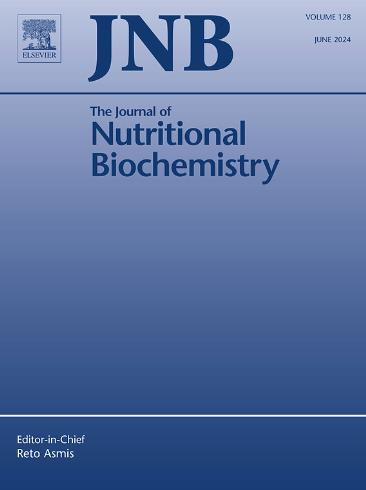Differences in mature human milk metabolic profiles based on delivery mode and parity
IF 4.8
2区 医学
Q1 BIOCHEMISTRY & MOLECULAR BIOLOGY
引用次数: 0
Abstract
Human milk (HM) is regarded as the gold standard for infant nutrition. The metabolite profiles of mature human milk (MHM) have been reported to be affected by maternal physiological conditions, lactation stage, and maternal diets. We collected MHM (3–6 months postpartum) from 32 healthy mothers with different parities and delivery modes. Then, GC-MS and LC-MS were used to perform an untargeted metabolomic study. A clear distinction can be observed in terms of MHM metabolites of mothers with different delivery modes and parities with a 95% confidence interval. A total of 119 differentially expressed metabolites (DEMs) were identified in MHM of women with different delivery modes. Metabolic pathway analyses indicated that these DEMs were mainly associated with fatty acid biosynthesis. The higher abundances of these DEMs in MHM of cesarean women may be due to the differing levels of cortisol and oxytocin between mothers with different delivery modes. Meanwhile, 284 DEMs were identified in MHM of women with different parities. These DEMs were primarily related to ABC transporters, center carbon metabolism in cancer, and D-amino acid metabolism. These findings highlighted the impact of delivery mode and parity on HM metabolite composition. Further research is needed to explore the long-term health implications of these metabolic differences and optimize infant nutrition strategies.

基于分娩方式和胎次的成熟人乳代谢谱的差异。
母乳(HM)被认为是婴儿营养的黄金标准。据报道,成熟人乳(MHM)的代谢物谱受母体生理状况、哺乳期和母体饮食的影响。我们收集了32位不同胎次和分娩方式的健康母亲产后3-6个月的MHM。然后,使用GC-MS和LC-MS进行非靶向代谢组学研究。不同分娩方式和产次的产妇MHM代谢物差异明显,置信区间为95%。在不同分娩方式的女性MHM中共鉴定出119种差异表达代谢物(dem)。代谢途径分析表明,这些dem主要与脂肪酸的生物合成有关。剖宫产妇女MHM中这些dem的丰度较高,可能是由于不同分娩方式的母亲皮质醇和催产素水平不同。同时,在不同性别的女性MHM中发现284个dem。这些dem主要与ABC转运蛋白、癌症中心碳代谢和d -氨基酸代谢有关。这些发现强调了输送方式和平价对HM代谢物组成的影响。需要进一步的研究来探索这些代谢差异对健康的长期影响,并优化婴儿营养策略。
本文章由计算机程序翻译,如有差异,请以英文原文为准。
求助全文
约1分钟内获得全文
求助全文
来源期刊

Journal of Nutritional Biochemistry
医学-生化与分子生物学
CiteScore
9.50
自引率
3.60%
发文量
237
审稿时长
68 days
期刊介绍:
Devoted to advancements in nutritional sciences, The Journal of Nutritional Biochemistry presents experimental nutrition research as it relates to: biochemistry, molecular biology, toxicology, or physiology.
Rigorous reviews by an international editorial board of distinguished scientists ensure publication of the most current and key research being conducted in nutrition at the cellular, animal and human level. In addition to its monthly features of critical reviews and research articles, The Journal of Nutritional Biochemistry also periodically publishes emerging issues, experimental methods, and other types of articles.
 求助内容:
求助内容: 应助结果提醒方式:
应助结果提醒方式:


